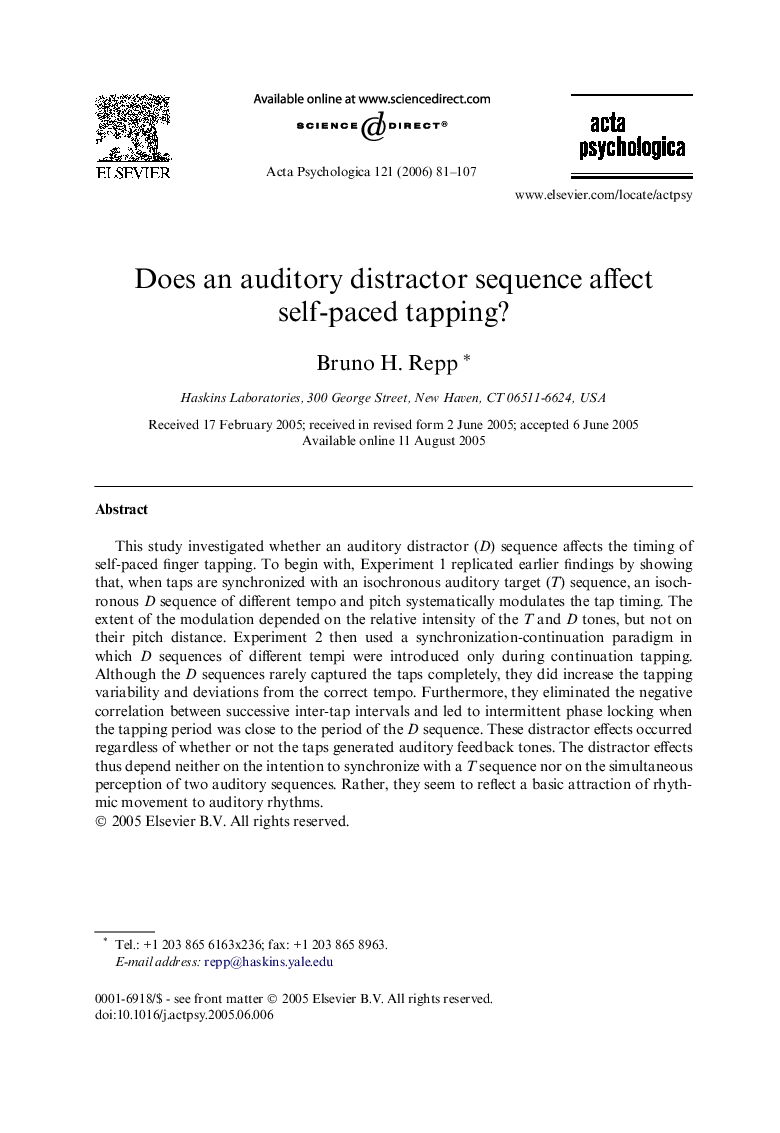| Article ID | Journal | Published Year | Pages | File Type |
|---|---|---|---|---|
| 920655 | Acta Psychologica | 2006 | 27 Pages |
This study investigated whether an auditory distractor (D) sequence affects the timing of self-paced finger tapping. To begin with, Experiment 1 replicated earlier findings by showing that, when taps are synchronized with an isochronous auditory target (T) sequence, an isochronous D sequence of different tempo and pitch systematically modulates the tap timing. The extent of the modulation depended on the relative intensity of the T and D tones, but not on their pitch distance. Experiment 2 then used a synchronization-continuation paradigm in which D sequences of different tempi were introduced only during continuation tapping. Although the D sequences rarely captured the taps completely, they did increase the tapping variability and deviations from the correct tempo. Furthermore, they eliminated the negative correlation between successive inter-tap intervals and led to intermittent phase locking when the tapping period was close to the period of the D sequence. These distractor effects occurred regardless of whether or not the taps generated auditory feedback tones. The distractor effects thus depend neither on the intention to synchronize with a T sequence nor on the simultaneous perception of two auditory sequences. Rather, they seem to reflect a basic attraction of rhythmic movement to auditory rhythms.
